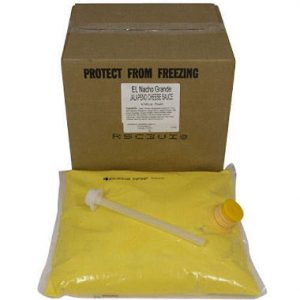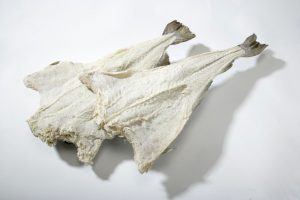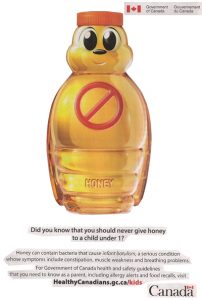Before I moved to the south I hadn’t thought about a gas station as a place for a meal. Growing up in Ontario (that’s in Canada) I was familiar with a Tim Hortons/gas station combos, but there weren’t a lot of independent stations selling foods like here in North Carolina. Most gas stations are stocked at least with crockpots full of boiled peanuts or metal rollers frying hot dogs. Sometimes there are tacos, tamales, or bbq sandwiches.
Oh and nachos with a faucet that squirts cheese.
That kind of cheese has, according to the Sacramento Bee, been linked to a cluster of five cases of botulism at a California gas station.
On Wednesday, Sacramento County Public Health officials pinpointed the source of the botulism outbreak as “prepared food, particularly nacho cheese sauce” from Valley Oak Food and Fuel gas station in the Delta. Five people are hospitalized in serious condition with botulism, a rare but serious paralytic illness caused by a nerve toxin, and an additional patient is suspected of having the illness.
The gas station, which sits on a busy stretch of River Road across from the Walnut Grove Bridge, stopped selling food and drink products on May 5 after the county Department of Environmental Management temporarily revoked its permit. Employees of the gas station refused to comment this week on the suspected outbreak.
Some of the gas station nacho cheeses come in an aseptically sealed bag (right, exactly as shown) that can be stored at room temperature because of how they are processed, despite the high pH and high water activity. Kathy Glass and Ellin Doyle wrote a fantastic summary of the safety of processed cheeses and they highlight three bot outbreaks of cheese sauces in the past.
A single case of fatal botulism in California was associated with the consumption of a Liederkranz Brand canned cheese spread in 1951. Few details are available about the formulation and conditions under which this product was produced and stored. The product label indicated that it was a pasteurized process soft ripened cheese spread with citric acid and vegetable gum added. Moisture and salt levels were not reported, but pH of the product was 5.9.
Two decades later in 1974, a cheese spread with onions was implicated in an outbreak in Argentina that resulted in six cases of botulism and three deaths.. As with the Liederkranz product, this spread was not thermally processed to be commercially sterile nor was it formulated specifically for safety. Laboratory experiments revealed that botulinal toxin was produced in cheese spread samples with a similar formulation (pH 5.7, aw 0.97) after 30 to 70 days’ storage at 30oC.
A third outbreak involving process cheese resulted in eight cases of botulism and one death in Georgia in 1993. The implicated cheese sauce was aseptically canned to eliminate C. botulinum spores; therefore, it was not formulated to prevent botulinal growth. The epidemiological investigation suggested that the product was likely recontaminated in the restaurant with C. botulinum spores and stored at room tempera- ture for several days before use. Inoculation studies of the implicated cheese sauce (pH 5.8, aw 0.96) revealed that botulinal toxin was produced after 8 days’ storage at 22oC.











